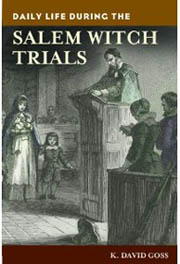Reverend John Hale
Reverend John Hale
-In 1692, John Hale was 56 years old.
-His parish was in Beverly on what is now Cabot Street.
-His wife, Sarah Noyes Hale was a cousin of Nicholas Noyes, minister of the Salem Town church.
-In 1680, Hale had come to the defense of Bridget in the case in Boston regarding her bewitchment of Thomas Oliver.
-On March 11, 1692 Hale, with the Reverend Noyes, was asked by The Reverend Parris to observe the girl’s afflictions. Even though it appeared to them that the girls were bewitched, they suggested that Parris fast and pray and wait before crying out on anyone for witchcraft.
-Hale was the only eye-witness to the afflictions of the girls who recorded them in writing.
-Betty Parris later confessed to Hale that it was the fortune-telling the girls had participated in that began the trouble.
-In July, Hale testified against accused witch, Dorcas Hoar, with whom he had had many conversations about her fortune telling. Hale’s (now-dead) daughter had suspected that Hoar was trying to kill her—a fear which Hale had tried to assuage. His testimony revealed that Hoar had continued to tell fortunes (many of which had to do with healthy children dying) long after she had assured him that she had “renounced or rejected all such practices”.
-In 1697, Hale wrote A Modest Inquiry into the Nature of Witchcraft in which he processes the trials in hindsight. In it he explains how his own experiences witnessing a witchcraft trial at the age of 12 affected his view of the 1692 trials. He comments on the judiciousness of the magistrates, notes the power of the afflictions, yet suggest that wrongs may have been done. He also lists the chief texts or precedents used by the justices. They are Sir Mathew Hale’s (no relation) Trial of Witches, Joseph Glanvill’s Collection of Sundry Trials in England and Ireland, Richard Bernard’s Guide to Grand Jury Men, and Richard Baxter’s Certainty of the World of Spirit’s.





Comments on this entry are closed.